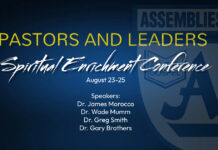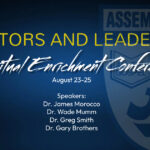And for the finale’ of the Growth Mindset series, we will dive right into one of the most important online communication tools; the website.
With the advent of online technology, the website is now the modern man’s directory. Jumping from yellow pages to online pages, websites give more than just contact details unlike the directories before, this online tool will dictate the first impression people will have on your church.
Developing a growth mindset translates in familiarizing yourself with the fundamentals of how websites work. And this chapter will shed some light on important things to consider about your Church’s website.
- On the Basics – Needless to say, your website must contain the basic information on your church such as:
- Location – A complete address so that people would be able to find the location of your church. It is easy as well to integrate a live google map location onto your website.
- Service Times – Aside from being a subtle invitation, indicating how many services your church has and the time they start gives visitors to your site alternatives on what service they want to attend. This also allows people to work around their schedules for them to attend the services in your church.
- Ministry information – By presenting this information, it sets expectations on options on the different ministries that they can be involved in.
- Mobile Friendly – Nowadays, most people do their searching and surfing on their phones and making sure your website has a good display on mobile devices guarantees that your online presence is as strong be it on a computer of mobile phone.
- Content: Having a good pool of content on your website helps in keeping your audience and visitors engaged as well as making your website more searchable on browsers. This also keeps them in the loop on any developments on your church such as events and special gatherings. Here are some examples of content that your church can brew for your website:
- Blog posts and Articles – Ranging from commentaries to “mini-sermons” Probably the biggest majority of content on most websites. These articles are the easiest to produce and are helpful in visitor engagement. Some considerations in terms of blog posts are to make most of them short and sweet given the limited attention span an average person has when logged on to the web. Finding a good combination between shot blogs and longer ones is imperative so that you have blog content that can cater to audiences with different lengths of attention.
- Testimonies – People resonate well when they hear stories of other people they are always eager to hear how the Lord has worked in the lives of others. By highlighting this, it not only generates interest, but it can also be a point of building connections within your church.
- Media – A video highlight or a recorded message from time to time boosts engagement as you can show elements in a video that are impossible to capture in words or a still photograph.
One important tip in managing your online tools is to make sure that your social media and web tools go hand in hand with each other. These tools may be varying in terms of function, but the intention is one in the same. Think of it as using a spoon and fork to eat a meal, these tools collectively help in one endeavor and that is to communicate the Gospel of the word. A growth mindset gives room for flexibility to easily adapt to the fast-paced changes in our world.



















